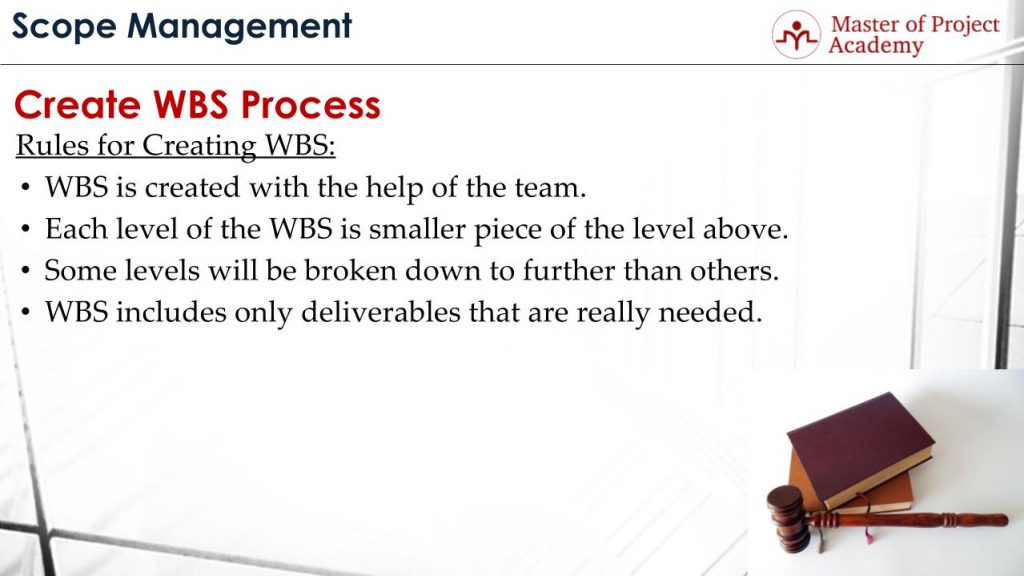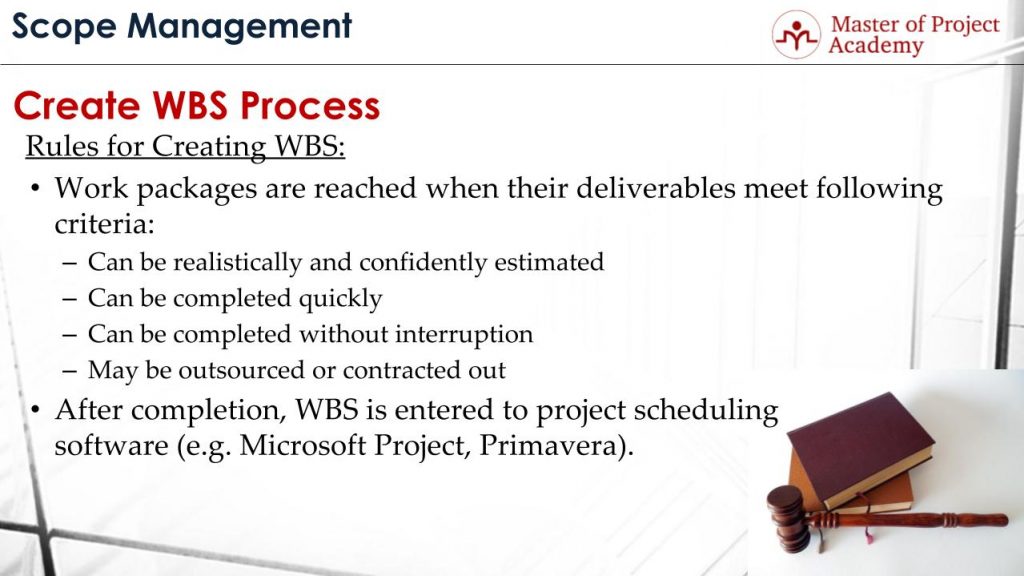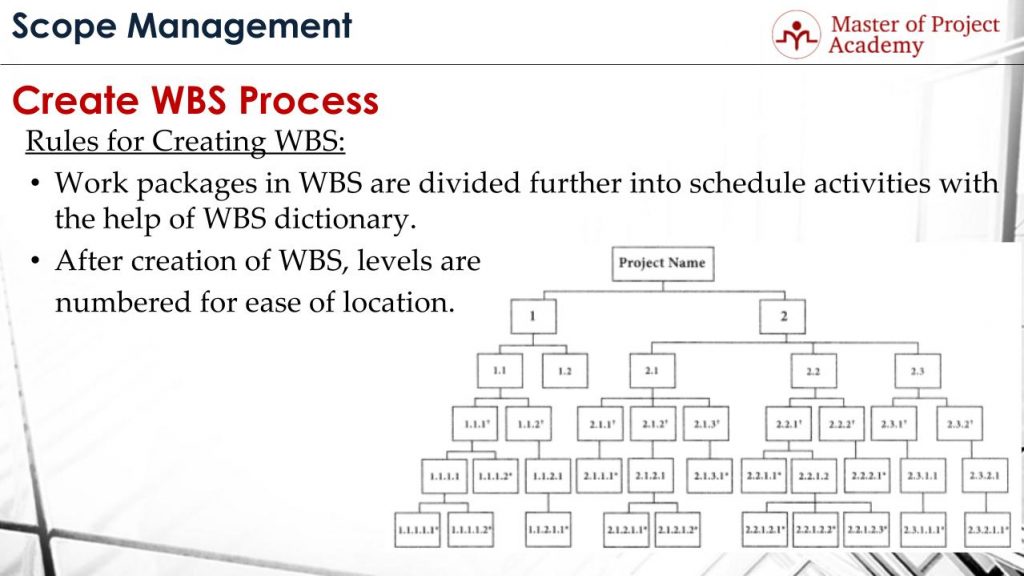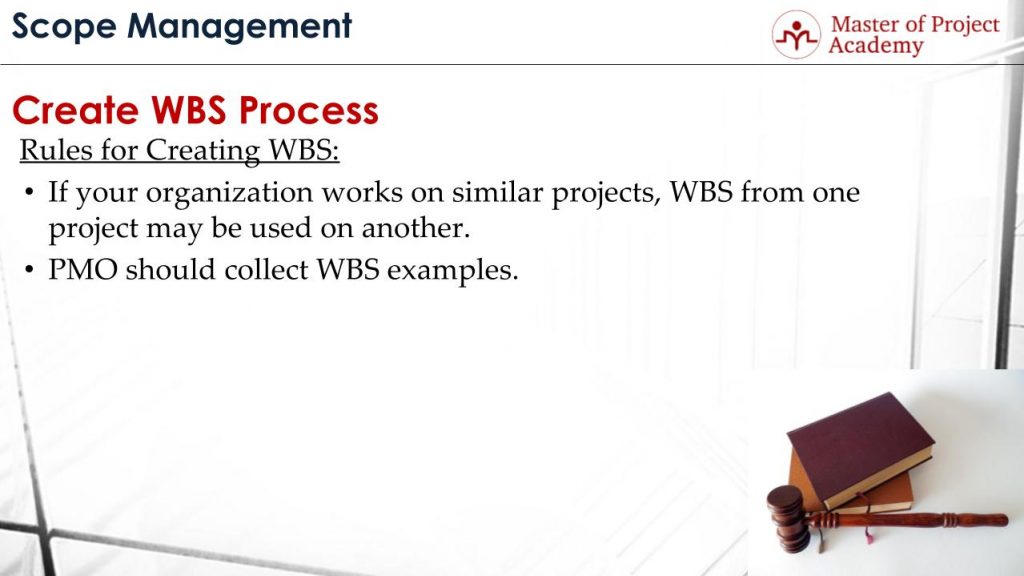Create work breakdown structure is the 4th process of the Scope Management according to the PMP certification training. Work breakdown structure is abbreviated as WBS. WBS of a project is actually a snapshot of project deliverables that are going to be completed throughout the project. Therefore, the creation of a work breakdown structure is crucial.
Attend our 100% Online & Self-Paced One-Hour Free PMP Training.
Work breakdown structure aims to subdivide the deliverables and project work into smaller and manageable parts. This helps to make better estimates and to conduct a better management, have a better coordination and also better monitoring. There are rules for creating work breakdown structure respectively. If these rules are followed properly during the creation, the work breakdown structure of the project will be flawless. In this article, we are going to list these 10 rules to follow to perfect the work breakdown structure.

10 Rules to Create the Perfect Work Breakdown Structure
- Rule #1: Work breakdown structure is created with the help of the team. The project team is informed about the project scope and the product scope. Since project team will perform the project activities, they should provide the breakdown of project deliverables respectively.
- Rule #2: Each level of the WBS is a smaller piece than the level above. Let’s consider an Aircraft system, which is a product. In the second level of WBS, major deliverables of the product should be listed. In the 3rd level, work packages of these major deliverables should be listed.
- Rule #3: Some levels will be broken down to further than others. This means that while some branches can go up to further levels, some branches can stop at higher levels. For instance, a work package might have been broken down to the 3rd level while another work package might have been broken down to the 7th level.
- Rule #4: Work breakdown structure includes only deliverables that are really needed. Unnecessary activities or deliverables must not be in work breakdown structure of the project.

- Rule #5: Work packages are reached when their deliverables meet the following criteria:
- Deliverables can be realistically and confidently estimated. One of the major benefits of having a work breakdown structure is easing the estimation, management, coordination, and monitoring project deliverables throughout the project. Therefore, once the WBS is created, deliverables must be smaller enough to estimate.
- Deliverables must be completed quickly. If a deliverable requires huge work, it might be better to consider breaking down further. Because bigger work packages or deliverables will be tough to manage, estimate and coordinate.
- Deliverables should be completed without interruption. This means a deliverable must be small enough to not to depend on many factors to be completed first.
- Deliverables may be outsourced or contracted out. It is not wise to completely outsource an entire aircraft system development to a supplier. But, navigation system or fire control system might be outsourced to a supplier.

- Rule #6: After completing WBS of a project, project deliverables are entered into the project scheduling software. These project management software tools help to define project activity dependencies, start and finish dates of activities and help to complete an end-to-end project schedule plan respectively. Most common project scheduling software tools used in the market are Microsoft Project and Primavera. There are various Microsoft Project courses online you may find, if you wish to learn more about how to use the software.
- Rule #7: Work Packages in the work breakdown structure are divided further into schedule activities with the help of WBS dictionary. Because Work Packages are described as nouns only with a couple words. And these work packages will require several activities to be performed to complete. Consider the aircraft system WBS. The engine was a work package under the air vehicle major deliverable. The engine of an Aircraft is still very complex to manufacture and activities that need to be performed to complete must be derived from the WBS dictionary.

- Rule #8: After creation of the WBS, levels are numbered for ease of location. As you see in the figure above, Project is divided into 2 major deliverables and these are numbered as 1 and 2 respectively. Then, work packages under each major deliverable are numbered as 1.1, 1.2 etc. for major deliverable 1 and 2.1, 2.2 etc. for major deliverable 2. As you see in the figure, some work packages are broken down into further levels compared to others as we expressed before.

- Rule #9: If your organization works on similar projects, WBS from one project may be used on another. Consider smartphone manufacturers. They release new versions of same product frequently. For instance, Apple releases new releases of iPhone and Samsung releases new versions of its Galaxy series. In each release, they bring new functionalities and features for sure. But, the majority of other functions remain as well. Such as camera, fingerprint systems, main case etc. Therefore, in each new release development project, an existing work breakdown structure of previous smartphone development projects can be used with some adjustments.
- Rule #10: Whenever there is a new project, Project Management Office should collect WBS examples and store it in the organizational process assets library. By this way, in future, new projects can use work breakdown structure examples when they are creating the WBS of the project.
Review by: Roland Morrison



2 thoughts on “Work Breakdown Structure: 10 Rules to Make It Perfect”
Comments are closed.